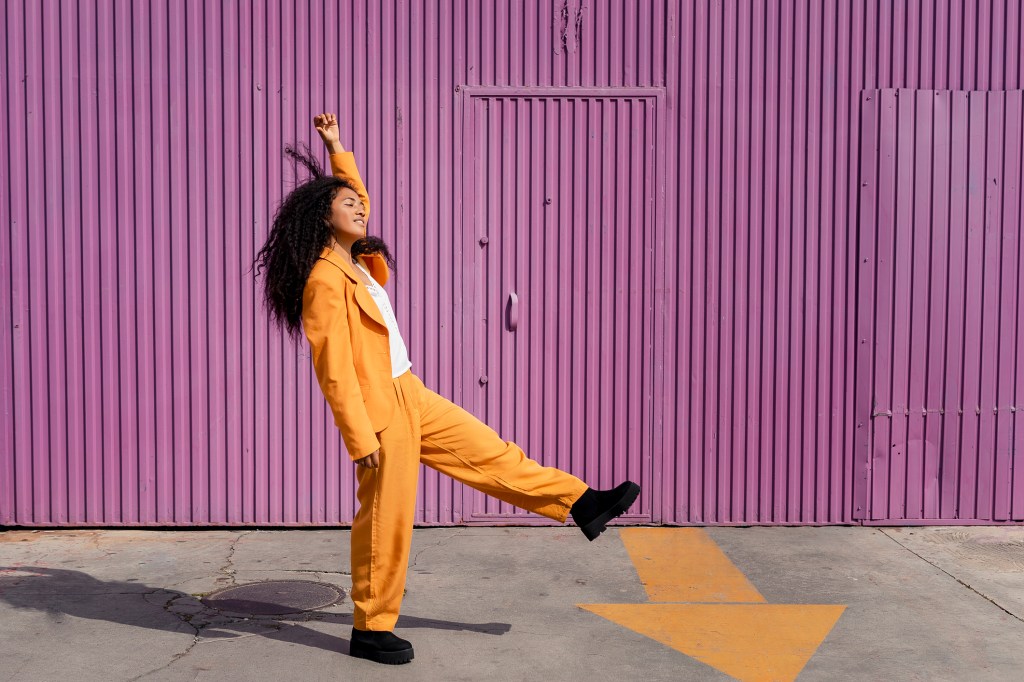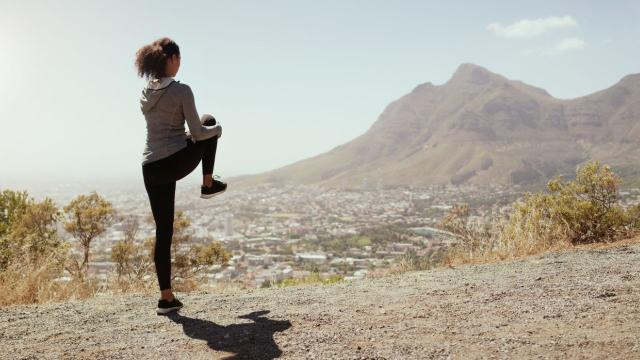Research shows that people’s ability to stand on one leg is an indicator of health and that getting better at standing on one leg can add to fitness and potentially lifespan.
Being able to stand on one leg is linked to increased levels of physical activity and decreased risk of falls and is associated with both quality and length of life. Around 37.3 million falls per year worldwide are severe enough to require medical attention.
The inability to balance on one leg for 20 seconds or longer is linked in otherwise healthy people to an increased risk of small blood vessel damage in the brain and reduced ability to understand ideas. You are less likely to be able to stand on one leg without a wobble if you have a multitude of medical conditions such as Parkinson’s disease, stroke or Alzheimer’s disease).
Pregnancy, menopause, the diagnosis of disease and retirement can also alter our strength and balance and ability to stay upright, mostly because of the way these affect our ability and motivation to engage in regular physical activity.
Sitting or reclining while awake is associated with lower muscle strength, risk of falls and physical function, sometimes irrespective of the amount of moderate or vigorous-intensity physical activity you do. People who sit for prolonged periods are more likely to develop type 2 diabetes, higher waist circumference and obesity.
Why standing on one leg matters

Data shows that the time people can stand on one leg changes for men and women at different ages – and an inability to hit those target times for your age group can highlight health problems.
The human body, when standing upright, is inherently unstable. We have a very small base of support relative to our height and width. When in good health we rely on our central and peripheral nervous system to integrate all the information coming in from our balance senses (eyes, inner ears and feedback from muscles and joints). We then engage the right muscles (feet, ankle, leg and core muscles, sometimes even the arm muscles) at the right time to make the necessary adjustments to our posture to stay upright.
The more physically active we are, the more likely we are to have good balance and of course the wider physical, psychological and social benefits of being regularly active are well known.
Other health problems can also affect our physical activity and are characterised by stooped posture and worsened balance, such as depression and osteoporosis, leading to an increased risk of falls and fracture. A stooped posture makes standing on one leg more difficult.
Should I start standing on one leg?
You can improve your ability to stand on one leg at any age, and improve your balance. It’s more challenging if you have a neurological condition, but studies have shown improvements in balance following exercise in many conditions and it is known to reduce falls in many others. In the UK around one in three adults over 65 and half of people over 80 will have at least one fall a year. A recent Public Health England report suggests that lack of activity in older adults because of the social restrictions during the pandemic could lead to 110,000 more older people falling this year.
You can test your own balance here and have a try at some simple balance exercises. You are more likely to have improved confidence in performing physical activity, and getting more active can help lengthen and improve quality of life.
Standing on one leg can be made much more challenging if you close your eyes while doing it. This is worth practising as it helps with our long- term balance and reduces the risk of falling over. With our eyes open the body becomes lazy and relies on our vision to help keep us balanced. If you take out vision, it gets the other senses working better. Most people can only do this for a short time compared to when they keep their eyes open. Have something close by to hold on to. You will improve over time.
For the over 70s, there’s also evidence to show standing on each leg for one minute three times a day can help improve hip bone mineral density. Stronger hip bone mineral density means if you do fall you are less likely to fracture.
And on that note, do I stand on one leg? Yes, when I am cleaning my teeth morning and evening, alternating from one leg to another at least twice. If I am feeling bold, I try one round of the teeth with my eyes closed. That, I might add, I am starting to find more difficult – I must practice more.![]()
Dawn Skelton, Professor in Ageing and Health, Glasgow Caledonian University
This article is republished from The Conversation under a Creative Commons license. Read the original article.
Lead Image Credit: iStock

Leave a Reply
You must be logged in to post a comment.